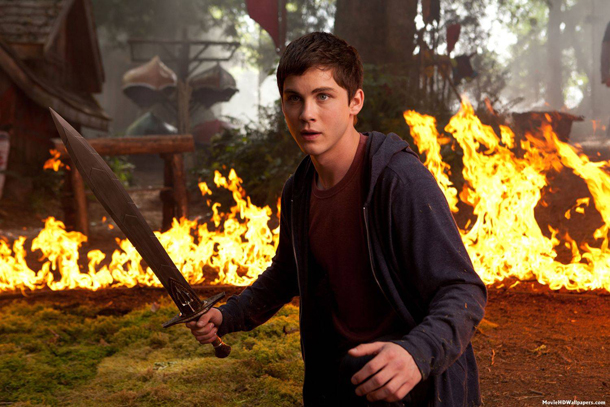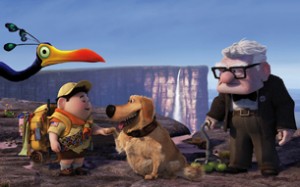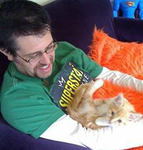PURE GOLDER Theres Nothing Cartoony About Cartoon Scripts Any More
Dave Golder wonders why live-action film scripts are often so perfunctory when animated films prove the writing talent is out there

Percy Jackson: Sea Of Monsters is an okay film. If you can forgive female characters so thinly characterised the actresses should be able to sue for sexual discrimination, the end-of-level bad guy finale and the shameless Harry Potter ripping-off, it’s a decent enough kids’ fantasy adventure. It’s worth watching for Nathan Fillion’s hilarious cameo as Hermes, if nothing else.
Shortly after I watched that cameo, a thought came to mind (which is never a good thing when you’re watching a film – you should be lost in it, not dissecting it). The Fillion scene felt like something out of a Pixar film. That in turn got me thinking about how much better the scripts are in Pixar’s CG films – and indeed Dreamworks and Blue Sky animated films – than in any other current live action children’s film. Or indeed most current blockbusters.
It’s not much of a generalisation to say that animated films these days boast some of the slickest, sharpest, most inventive scripts to come out of Hollywood. In the genre of family entertainment they are streets ahead of fare like the Narnia films, the Percy Jackson franchise or Journey To The Centre Of The Mysterious Island or whatever it was.
Every Scene Counts
Whereas with How To Train Your Dragon , Monsters University or Despicable Me each scene is a mini masterpiece in itself, overflowing with witty little touches, shrewd character choices and well-crafted gags. These films can gear-change from fun to poignancy with a micro-engineered precision that leaves your heart in your stomach, only to make your spirits soar a cut later.
They’re not particularly deeper than their live counterparts. Toy Story 3 ’s teary tale of a boy growing out of childish things contains no greater insight than Sea Of Monsters ’ subtext about teenage outsiders feeling like monsters. But Toy Story ’s approach was fresh, and original; in Percy Jackson it feels like something we’ve seen in a zillion kids' fantasy shows from Australia.

As I said earlier, the best of the animated films even outshine Oscar-winning dramas at times. Want daring and different and emotional? Look no further than the opening of Up . Lucky old Academy, having created a ghetto category for Best Animated Feature a few years beforehand so they could give Pixar the consolation prize and award Best Picture to the begging-on-bended-knees-for-an-Oscar The Hurt Locker instead.
Of course, not all current animated films are genius. Many fall far, far short of that. But if you could quantify quality of script somehow (which, of course, is a pointless exercise, so just accept the spurious Golder Standard for the sake of argument) and averaged all animated films against all live action films, I reckon animated films would win by a country mile.
Weekly digests, tales from the communities you love, and more
Collaboration Game
Why are animated films blessed with better quality scripts in general? Maybe it’s a “designed by committee” approach that US telly loves so much. The old saying would have you believe that “a camel is a horse designed by committee” (in other words, perfect for the task, but not exactly pretty). On the other hand, US scriptwriting by committee often creates thoroughbreds.
Certainly when you watch behind-the-scenes features on Pixar Blu-rays you get the feeling that everybody on every level is involved; that the script is a mere blueprint and that actors, animators, artists, editors… everybody is allowed input, and the best ideas remain. A lovely little character moment can evolve from something like an animator deciding that this character should have that kind of walk, which then inspires the director to try something in this scene he hadn’t previously thought of…
Maybe the key difference is that things can be changed on computer right up until final compositing with animation, whereas live-action directors are stuck with the live-action footage they shot months before (bar a few reshoots). Animation directors can keep on fiddling to the end, basically.
In other art forms, collaboration can lead to dilution. In Hollywood filmmaking, the opposite seems true – the more the merrier. Except if you're called Woody Allen. Who’s pretty much a European filmmaker now.
But animation and the auteur theory? Doesn’t seem to mix, does it?
Dave Golder

Dave is a TV and film journalist who specializes in the science fiction and fantasy genres. He's written books about film posters and post-apocalypses, alongside writing for SFX Magazine for many years.


